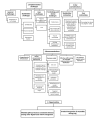Opportunities and Challenges Surrounding the Use of Wearable Sensor Bracelets for Infectious Disease Detection During Hajj: Qualitative Interview Study
- PMID: 40198912
- PMCID: PMC12015332
- DOI: 10.2196/60484
Opportunities and Challenges Surrounding the Use of Wearable Sensor Bracelets for Infectious Disease Detection During Hajj: Qualitative Interview Study
Abstract
Background: Wearable sensor bracelets have gained interest for their ability to detect symptomatic and presymptomatic infections through alterations in physiological indicators. Nevertheless, the use of these devices for public health surveillance among attendees of large-scale events such as hajj, the Islamic religious mass gathering held in Saudi Arabia, is currently in a nascent phase.
Objective: This study aimed to explore hajj stakeholders' perspectives on the use of wearable sensor bracelets for disease detection.
Methods: We conducted a qualitative, theoretically informed, interview-based study from March 2022 to October 2023 involving a diverse sample of hajj stakeholders, including technology experts, health care providers, and hajj service providers. The study was guided by the task-technology fit model and the unified theory of acceptance and use of technology to provide a comprehensive understanding of the factors influencing the acceptance and use of the technology. Semistructured in-depth interviews were used to capture perspectives on using wearable sensor bracelets for infectious disease detection during hajj. Thematic analysis of interview transcripts was conducted.
Results: A total of 14 individuals were interviewed. In total, 4 main themes and 13 subthemes emerged from the study, highlighting crucial challenges, considerations, recommendations, and opportunities in the use of wearable sensor bracelets for the presymptomatic detection of infectious diseases during hajj. Implementing wearable sensor bracelets for disease detection during hajj faces obstacles from multiple perspectives, encompassing users, implementing stakeholders, and technological factors. Hajj stakeholders were concerned about the substantial financial and operational barriers. The motivation of implementing stakeholders and users is essential for the acceptance and uptake of devices during hajj. Successful integration of wearables into the hajj surveillance system depends on several factors, including infrastructure, device features, suitable use cases, training, and a smooth organizational integration process.
Conclusions: This study provides valuable insights into the potential opportunities and challenges of adopting wearable sensor bracelets for disease detection during hajj. It offers essential factors to consider and important suggestions to enhance comprehension and ensure the effective implementation of this technology.
Keywords: artificial intelligence; hajj; infectious diseases; presymptomatic detection; task-technology fit; unified theory of acceptance and use of technology; wearable sensor.
©Noha Maddah, Arpana Verma, John Ainsworth. Originally published in JMIR Formative Research (https://formative.jmir.org), 08.04.2025.
Conflict of interest statement
Conflicts of Interest: None declared.
Figures
Similar articles
-
Opportunities and Challenges Surrounding the Use of Data From Wearable Sensor Devices in Health Care: Qualitative Interview Study.J Med Internet Res. 2020 Oct 22;22(10):e19542. doi: 10.2196/19542. J Med Internet Res. 2020. PMID: 33090107 Free PMC article.
-
The Hajj and COVID-19: How the Pandemic Shaped the World's Largest Religious Gathering.Am J Trop Med Hyg. 2021 Jan 11;104(3):797-799. doi: 10.4269/ajtmh.20-1563. Am J Trop Med Hyg. 2021. PMID: 33432907 Free PMC article.
-
Clinical pharmacy services in acute care setting during mass gatherings (Hajj): Insights from a task force.J Infect Public Health. 2024 Apr;17 Suppl 1:68-75. doi: 10.1016/j.jiph.2023.05.023. Epub 2023 May 20. J Infect Public Health. 2024. PMID: 37271687
-
Wearing the Future-Wearables to Empower Users to Take Greater Responsibility for Their Health and Care: Scoping Review.JMIR Mhealth Uhealth. 2022 Jul 13;10(7):e35684. doi: 10.2196/35684. JMIR Mhealth Uhealth. 2022. PMID: 35830222 Free PMC article.
-
Vaccinations for Hajj: Enhancing health and global health security.Travel Med Infect Dis. 2025 Jan-Feb;63:102784. doi: 10.1016/j.tmaid.2024.102784. Epub 2024 Nov 22. Travel Med Infect Dis. 2025. PMID: 39579838 Review.
References
-
- Sahu KS, Majowicz SE, Dubin JA, Morita PP. NextGen public health surveillance and the internet of things (IoT) Front Public Health. 2021 Dec 3;9:756675. doi: 10.3389/fpubh.2021.756675. https://europepmc.org/abstract/MED/34926381 - DOI - PMC - PubMed
-
- Hirten RP, Danieletto M, Tomalin L, Choi KH, Zweig M, Golden E, Kaur S, Helmus D, Biello A, Pyzik R, Charney A, Miotto R, Glicksberg BS, Levin M, Nabeel I, Aberg J, Reich D, Charney D, Bottinger EP, Keefer L, Suarez-Farinas M, Nadkarni GN, Fayad ZA. Use of physiological data from a wearable device to identify SARS-CoV-2 infection and symptoms and predict COVID-19 diagnosis: observational study. J Med Internet Res. 2021 Feb 22;23(2):e26107. doi: 10.2196/26107. https://www.jmir.org/2021/2/e26107/ v23i2e26107 - DOI - PMC - PubMed
-
- Yeung AW, Torkamani A, Butte AJ, Glicksberg BS, Schuller B, Rodriguez B, Ting DS, Bates D, Schaden E, Peng H, Willschke H, van der Laak J, Car J, Rahimi K, Celi LA, Banach M, Kletecka-Pulker M, Kimberger O, Eils R, Islam SM, Wong ST, Wong TY, Gao W, Brunak S, Atanasov AG. The promise of digital healthcare technologies. Front Public Health. 2023 Sep 26;11:1196596. doi: 10.3389/fpubh.2023.1196596. https://europepmc.org/abstract/MED/37822534 - DOI - PMC - PubMed
-
- Hayati N, Ramli K, Suryanegara M, Salman M. An internet of things (IoT) reference model for an infectious disease active digital surveillance system. Int J Adv Comput Sci Appl. 2021;12(9) doi: 10.14569/ijacsa.2021.0120956. - DOI
-
- Meraj M, Alvi SA, Quasim MT, Haidar SW. A critical review of detection and prediction of infectious disease using IOT sensors. Proceedings of the Second International Conference on Electronics and Sustainable Communication Systems; ICESC 2021; August 04-06, 2021; Coimbatore, India. 2021. - DOI
MeSH terms
LinkOut - more resources
Full Text Sources
Medical



